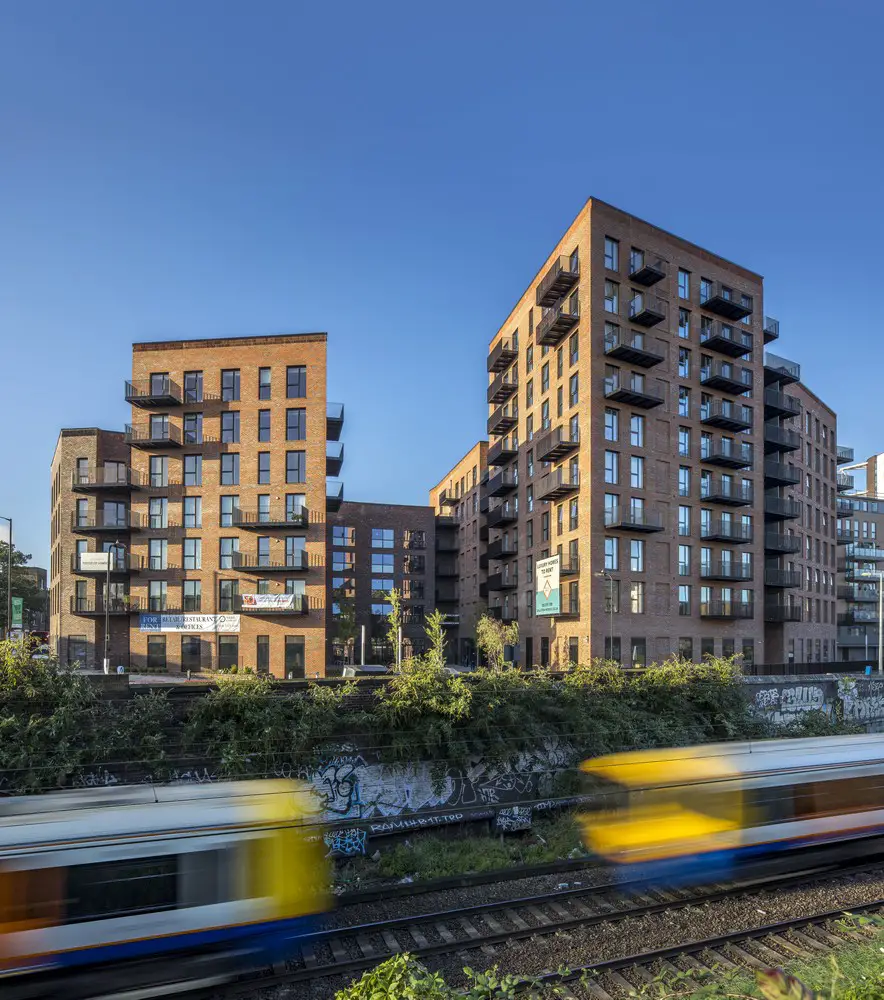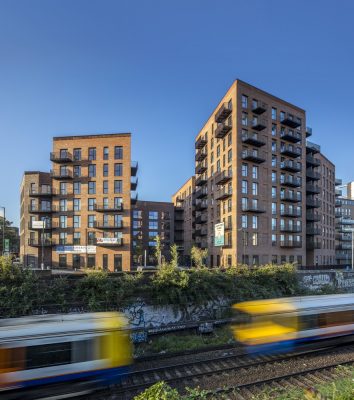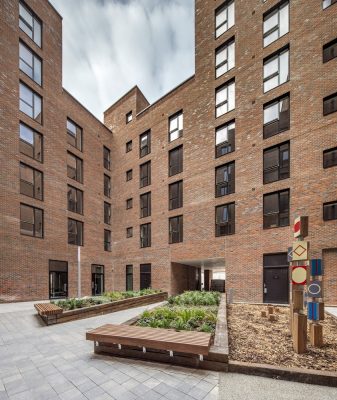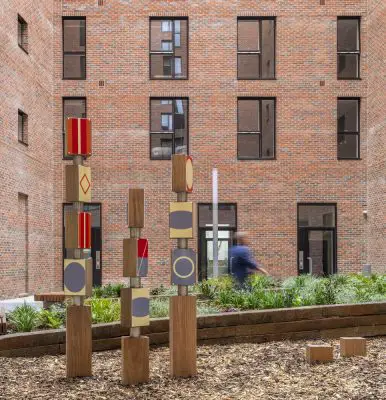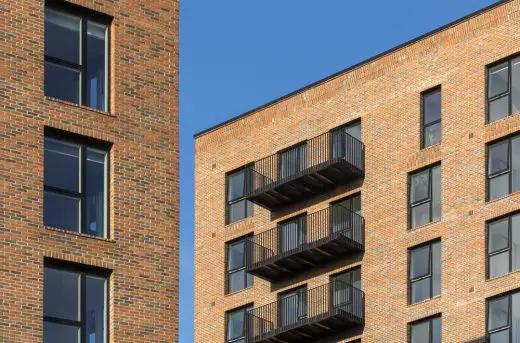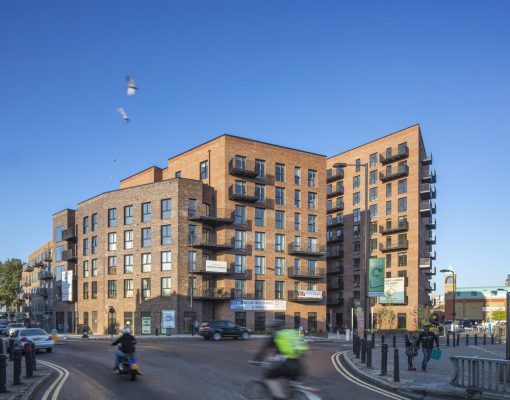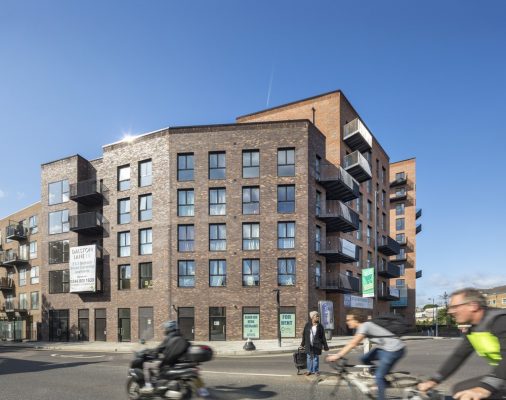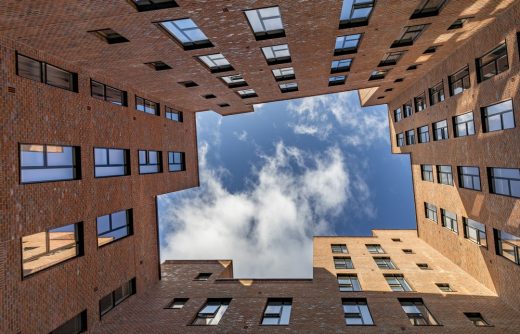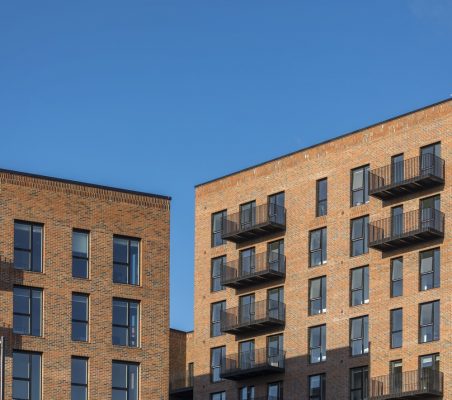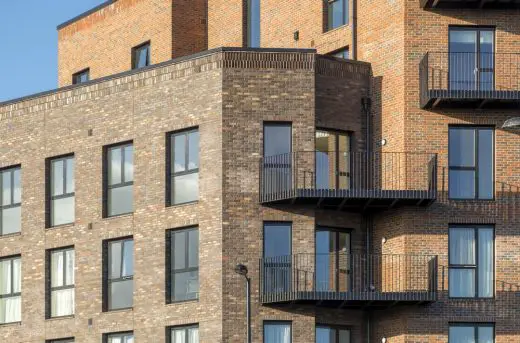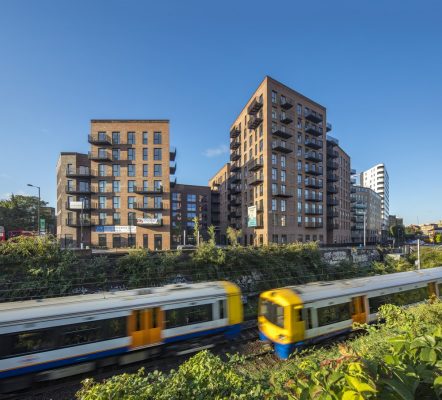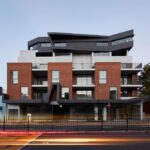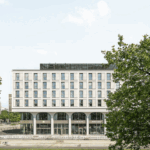Dalston Works Mixed-Use Development, Hackney Architecture, Homes, Offices, Retail Spaces, Building Images
Dalston Works Mixed-Use Development in Hackney
Housing, Retail and Industry Buildings in London, UK – design by Waugh Thistleton Architects
22 Oct 2017
Dalston Works Mixed-Use Development
Design: Waugh Thistleton Architects
Location: Dalston, Hackney, Northeast London, England, UK
Hackney-based architecture practice completes £24m Dalston Works project for Regal London
Waugh Thistleton Architects has completed Dalston Works, the world’s largest cross-laminated timber building for London property developer Regal London. The mixed use development, located in the heart of Dalston, showcases how the innovative use of sustainable materials like CLT can help deliver highquality, high density housing to the capital without compromising the environment.
Dalston Works comprises 121 apartments for rent alongside two ground level courtyards flanked by 1500 sqm of retail and restaurant space. To the south of the site a 3500 sqm flexible workspace hub caters to the growing creative community in Dalston.
Simon De Friend, CEO at Regal Homes said:
“As a responsible and innovative developer, Regal London is proud to deliver high quality homes that will not only visually enhance areas and contribute to ongoing regeneration, but which also champion and lead the way in the development of sustainable homes.
“This is a pivotal moment in our history as Dalston Works, our first project in the private rented sector and a beacon for how sustainable materials like CLT can deliver high-quality, high-density housing to the capital without compromising the environment, is declared open. We are passionate about a development that offers a genuine long-term rental and environmental solution for Londoners, whether it be local families or London professionals.”
The building is broken into several distinct volumes with varying roof heights, designed to maximise daylight to the courtyards and living spaces. Dalston Works’ brickwork references the surrounding Victorian and Edwardian housing and detailing of local warehouses, while providing a contemporary addition to the local streetscape.
Located on a prominent corner site previously occupied by industrial buildings, the building’s ten storeys reach higher than was thought possible, given the structural restrictions posed by the proximity to a planned Crossrail route. Through the use of timber for the external walls, party walls, floors, ceilings, stairs and lift cores, Dalston Works weighs merely a fifth of a comparable concrete structure, warranting the viability of the scheme in the site context.
Andrew Waugh, of Waugh Thistleton Architects said: “Dalston Works reveals the future of low carbon construction. Our building offers an exemplar solution to a demand which will only increase: the construction of high density, affordable and environmentally sustainable homes.
Dalston Works demonstrates the possibilities of engineered, cross-laminated timber as a cost efficient, and desperately necessary, viable alternative to the polluting technologies of concrete and steel. The collaborative effort between our progressive client and passionately innovative design team has resulted in something truly special: Dalston Works sets a seminal precedent for the continuous innovation of engineered timber construction.”
The sustainability credentials of the building are significant with approximately 50 percent reduction in the embodied carbon of the structure compared to a traditional concrete frame building. The timber also acts as carbon storage with over 2,600 tonnes of C02 locked into the material. This effectively makes the building carbon negative for the first years of its usage.
Using offsite construction shortened the construction programme allowing the frame to be completed in 374 days; while 80% fewer site deliveries reduced disruption, lowering the impact of the development on local residents and the environment.
Gavin White, Director and CLT expert at Ramboll, said:
“Dalston Works is a real landmark project, and a testament to the versatility of CLT. It showcases what can be achieved when a forward thinking client enables you to demonstrate the benefits of offsite construction methods.
It has been exciting to work with a team who are as passionate about the benefits of offsite construction as we are, and we look forward to seeing many more such schemes emerge across the UK. The height and size of Dalston Works, and its excellent performance in terms of sustainability and efficiency, demonstrate what can be achieved with this dynamic material.”
Dalston Works Mixed-Use Development – Building Information
Client: Regal London
Architect: Waugh Thistleton Architects
Structural Engineers: Ramboll (CLT), PJCE (Concrete)
M+E: XCO2
Contractor: Regal London
Developer: Regal London
Photography: Daniel Shearing
Dalston Works Mixed-Use Development in Hackney images / information received 221017
Location: Dalston, Hackney, London, England, UK
London Building Designs
Contemporary London Architectural Designs
London Architecture Links – chronological list
London Architecture Tours – bespoke UK capital city walks by e-architect
Dalston Buildings
Sapling Restaurant in Dalston, Hackney
Kinetica apartments, Dalston Building
Hackney Housing : Adelaide Wharf
Northeast London Buildings
Kings Crescent Estate Phases 1 and 2, Hackney
Architects: Karakusevic Carson Architects and Henley Halebrown
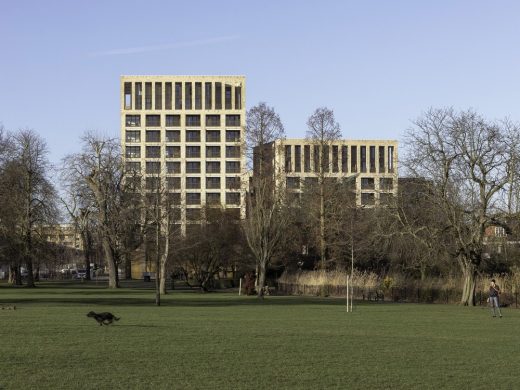
photo © Peter Landers
Kings Crescent Estate Phases 1 and 2
Design: Matthew Lloyd Architects LLP
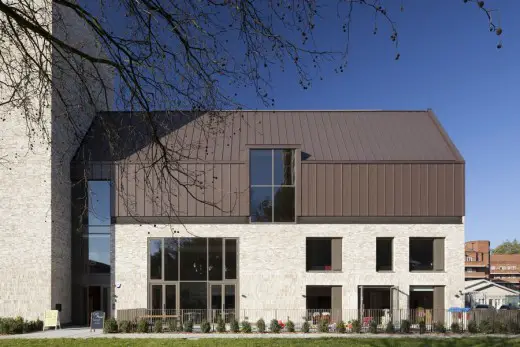
photos : Benedict Luxmoore, Patricia Woodward
Frampton Park Baptist Church Building in Hackney
Comments / photos for the Dalston Works Mixed-Use Development in Hackney page welcome
Website: Waugh Thistleton Architects

